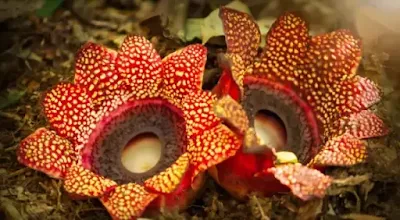Sapria is a remarkable plant and stinking parasitic plant
Sapria is a remarkable plant. It has no leaves, stem, or root, can't make food by photosynthesis, and exists nearly as long as it can remember as strings of cells sucking out the entirety of its sustenance from plants filling in the rainforests of Borneo. The solitary time the parasite uncovers itself in the open is the point at which it blasts out as a tremendous bloom the size of a supper plate, hued red with pale dots, and smelling of decaying substance. It's additionally a relative of the biggest blossom on the planet, Rafflesia arnoldii, another parasitic plant.
 |
| Sapria is a remarkable plant and stinking parasitic plant |
As of late, another peculiar element of Sapria has been uncovered. The species Sapria himalayana has lost about 44% of the qualities ordinarily found in blooming plants and has likewise completely rejected every one of the hereditary remainders of any chloroplasts, the cell bodies that perform photosynthesis, the previously known instance of a plant relinquishing its chloroplast legacy. Albeit other parasitic plants have trashed a large number of their qualities, it's not at all as extraordinary as Sapria – the dodder parasite, for instance, has just lost 16% of its qualities. Furthermore, to cover its limited parasitic life, Sapria has additionally taken over 1% of its qualities from its host plant.